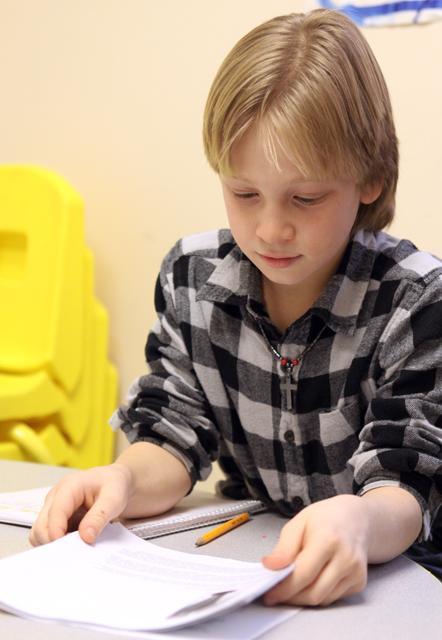Two of our state’s largest accredited institutions are located next door to one another: N.C . State University and North Carolina Central Prison. Many children in today’s society may one day enter one or the other of these establishments.
This idea motivated Kirby Jones to take a closer look at the educational well-being of at-risk, disadvantaged children in his community. Senior Pastor of Williams Grove Baptist Church in Raleigh for 11 years, Jones observed many children who became discouraged with school and later failed to pursue education after high school.
Upon researching this issue in American society, Jones discovered a notable gap between the performance levels of low-income American children and that of children in other industrialized nations. This gap was particularly obvious in the areas of science, technology, engineering and mathematics – the core components of the STEM-based curriculum.
Jones was driven to establish a safe environment where children could come after school, during school breaks and the summer to explore science and mathematics on a deeper, more tangible level. He drafted a proposal, pitched it to concerned board members in the community, and the Daniel Center for Math and Science was born.
In April 2011 the first students arrived. Deemed a 5-star childcare program, it employed licensed childcare workers and certified teachers to serve children ages 5 to 12 after school and during breaks. The curriculum aligns with the North Carolina Standard Course of Study.
“Our goal here is not to mimic public schools,” Jones said. “There are no textbooks. We use hands-on, activity-based learning opportunities to enhance and reinforce what they learn in school.”
Many of those opportunities present themselves as field trips that allow the students to see math and science at work in the real world. Through their involvement with the Daniel Center, they have visited many local businesses and enterprises where STEM education could prepare them to work. Jones has the hope that exposure to these career options will ignite the students’ desires to pursue further education themselves.
In November, Jones won Time Warner Cable’s Connect a Million Minds Super Connector Search representing eastern North Carolina. Jones was recognized for his hard work in making science, math and technology relevant to children’s lives and encouraging them to pursue STEM-related careers. The Daniel Center was awarded $5,000 and Jones created his own public service announcement regarding the goals of the center.
One challenge that Jones has encountered since opening the center last spring was effectively communicating the program’s mission to the community.
“This is not just childcare – we offer much-needed educational enhancement,” Jones said.
Jones expressed concern that many parents in the surrounding area do not see STEM education as a priority in their children’s lives. The program has the capacity for 32 students; currently their enrollment is at 19.
“We are not where I want to be just yet, but we have made measurable progress so far,” Jones said.
On a recent survey sent home with students, parents unanimously answered questions such as “Has your child benefited from this program?” and “Has your child’s attitude toward math and science improved?” with “Yes.”
In fact, one of Jones’ primary purposes of the Daniel Center is to change the way that students think about STEM subject areas as well as themselves with regard to science and math.
Given many of the students’ low socioeconomic status, many of them never consider pursuing education beyond high school. They are not usually encouraged to attend college by their families. It is not usually a possibility.
“These students live just down the road from N.C . State, but to many of them it might as well be on the moon,” Jones said. “They can’t see beyond their own neighborhood.”
The mission of the Daniel Center is to change children’s perception of their own abilities. The teachers who work with the children every day strive to express that higher education is attainable and encourage them to pursue it.
“At the Daniel Center we make the assumption that these children will attend college,” Jones said. “Here, college is not an ‘if,’ it’s a ‘when.'”
Student volunteers from the University help to convey the idea that college is a reachable goal. They serve as a daily reminder that higher education is a possibility.
“Volunteers from State work alongside the teachers here to implement lessons and activities each day,” Jones said. “Their presence alone is huge for our students.”
Jones was very appreciative of his NCSU volunteers and expressed the importance of training new teachers to recognize the influence they have on each and every child.
“Do not take lightly your ability to affect these children,” Jones said. “Everything you do makes a powerful difference in the lives of children.”








